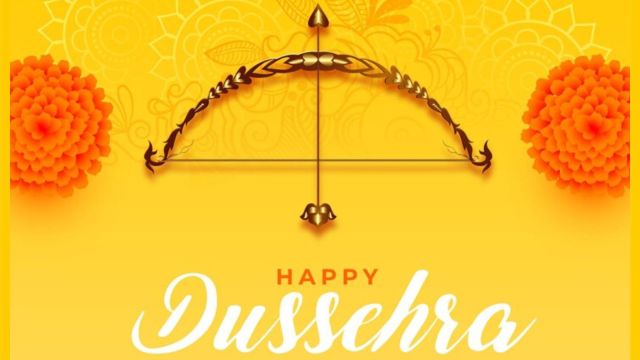When is Dussehra 2024: Date, timings, significance and more about Vijayadashami
Dussehra 2024 Date in India: Dussehra, a major Hindu festival that is celebrated at the end of Navratri every year, is observed and celebrated differently in various parts of India with great joy and fervor. Here is everything you know, from date to timings, significance and more.
 Dussehra 2024: Know all about the Date, History, and Significance of Vijayadashami Festival.
(Source: Shutterstock)
Dussehra 2024: Know all about the Date, History, and Significance of Vijayadashami Festival.
(Source: Shutterstock)Dussehra 2024 Date in India Calendar: Dussehra, also known as Vijayadashami, is a significant Hindu festival, with the name “Dussehra” being derived from the Sanskrit words “Dasha,” meaning ten and “Hara,” meaning defeat, signifying the victory.
This festival commemorates the victory of Lord Rama over the ten-headed demon king Ravana, and Goddess Durga’s triumph over the demon Mahishasur, marking the end of Shardiya Navratri.
As per the Hindu calendar, it usually occurs on the tenth day of the Ashwin or Kartik month. With the festival just around the corner, here’s all you need to know.
When is Dussehra 2024: Date and Timings
Dussehra marks the end of the nine-day-long Navratri festival. In the Hindu calendar, it falls on the 10th day of the Ashwin or Kartik month. Dussehra in 2024 will be celebrated on Saturday, October 12th. As per the DrikPanchang timings for various rituals and ceremonies on this day are as below:
| Dashami Tithi Begins: | 10:58 AM | October 12, 2024 (Saturday) |
| Dashami Tithi Ends: | 09:08 AM | October 13, 2024 (Sunday) |
| Shravana Nakshatra Begins: | 05:25 AM | October 12, 2024 (Saturday) |
| Shravana Nakshatra Ends: | 04:27 AM | October 13, 2024 (Sunday) |
| Vijay Muhurat: | 02: 03 PM to 02:49 PM | October 12, 2024 (Saturday) |
| Aparahna Puja Time: | 01:17 PM to 03:35 PM | October 13, 2024 (Sunday) |
Why is Dussehra celebrated?: History and Significance
One of the main reasons for celebrating Dussehra is to commemorate the victory of Lord Rama over the demon king Ravana, as narrated in the Hindu epic Ramayana.
According to the story, Rama, the prince of Ayodhya, rescues his wife Sita from the clutches of Ravana, who had abducted her. The day Rama killed Ravana is celebrated as Dussehra, symbolising the victory of good (Rama) over evil (Ravana).
Another reason for celebrating Dussehra is to honour the victory of Goddess Durga over the buffalo demon Mahishasura. This tale is central to the festival of Navratri, which culminates in Dussehra. The battle between Durga and Mahishasura represents the victory of good over evil and the triumph of truth and righteousness.
In essence, the festival of Dussehra signifies righteousness and the power of good to triumph over evil, thereby teaching us moral values such as bravery, virtue, and the importance of fighting injustice.
How is Dussehra celebrated?: Cultural Traditions
Dussehra is celebrated with diverse customs across India. Here’s an overview of how different regions celebrate this festival:
Northern India:
- Ramlila Performances: A dramatic re-enactment of the Ramayana culminates in the defeat of Ravana by Lord Rama. These performances, which can last up to ten days, end on Dussehra with the burning of effigies of Ravana, Meghnad, and Kumbhkaran, filled with fireworks to symbolise the destruction of evil.
Eastern India:
- Durga Puja: In states like West Bengal, Dussehra coincides with the conclusion of Durga Puja, where elaborate pandals house beautifully crafted idols of Goddess Durga. The festival concludes with the immersion (Visarjan) of these idols in rivers or ponds, a symbolic return of the goddess to her celestial abode, marking the victory of Durga over Mahishasura.
Southern India:
- Mysore Dasara: In Karnataka, Mysore Dasara is renowned for its grandeur, featuring a royal procession (Jumboo Savari) led by elaborately decorated elephants carrying the idol of Goddess Chamundeshwari. The Mysore Palace is illuminated with thousands of lights, creating a spectacular view.
Western India:
- Navratri Celebrations: Leading up to Dussehra, the festival of Navratri in states like Gujarat involves dancing the Garba and Dandiya Raas, vibrant folk dances that continue late into the night. On Dussehra, idols of Goddess Durga are immersed in water bodies.
- Apta Tree Worship: In Maharashtra, the leaves of the Apta tree are exchanged as symbols of gold, commemorating the day as one of victory and prosperity.
- 01
- 02
- 03
- 04
- 05































